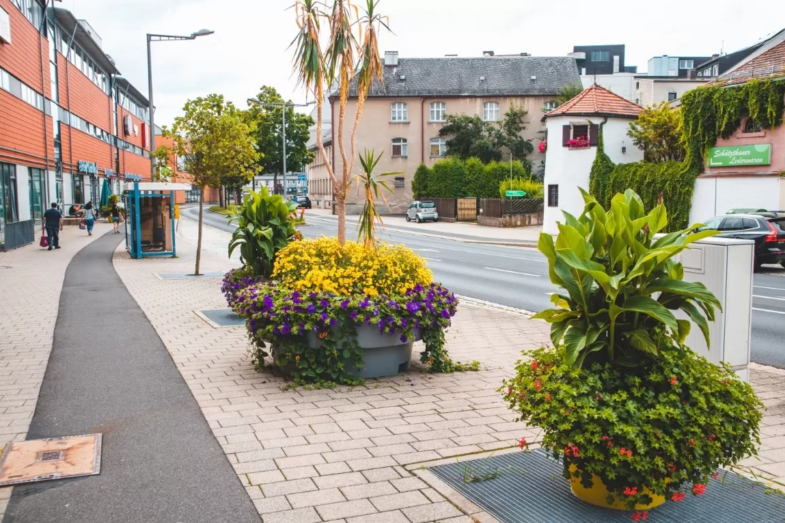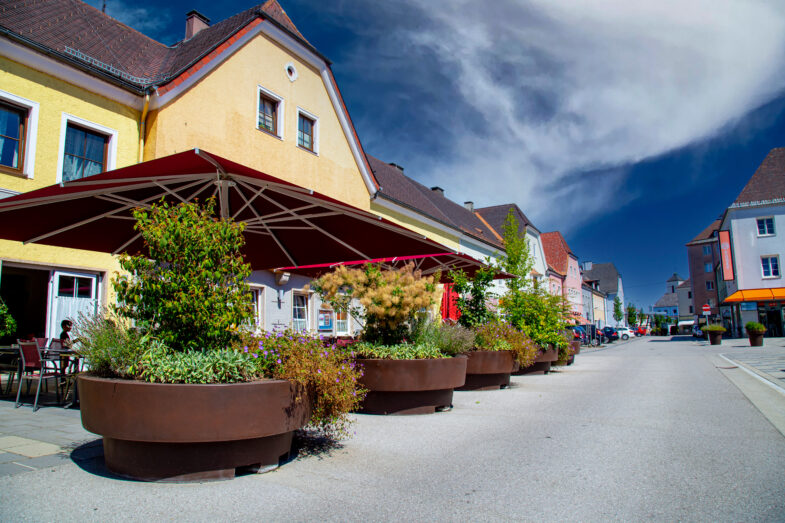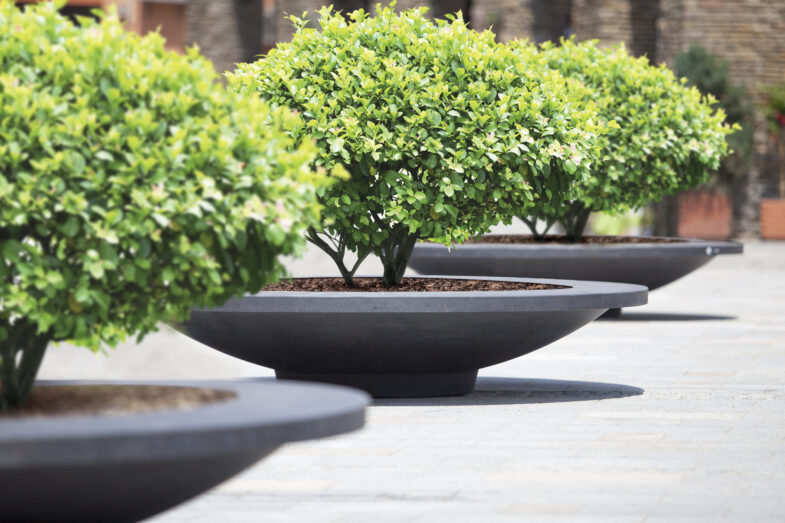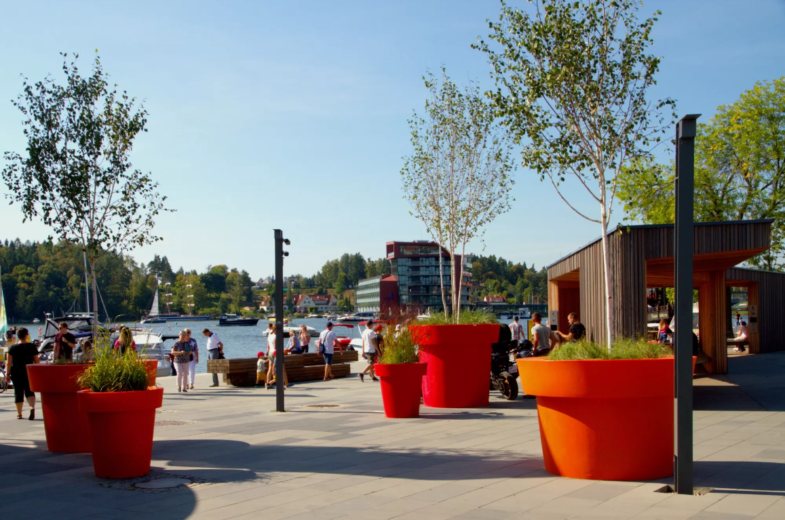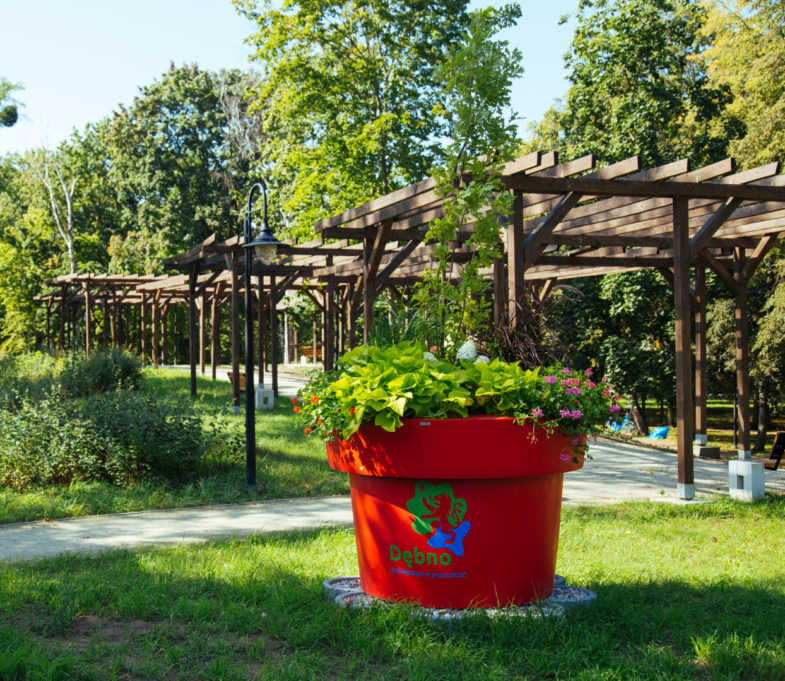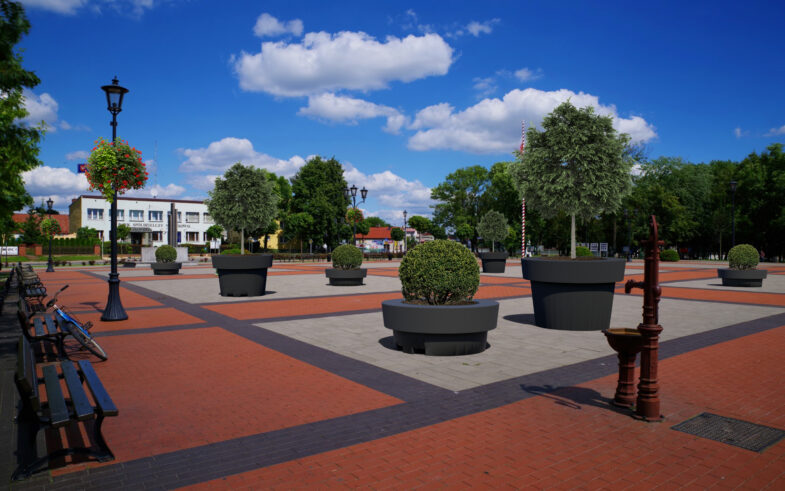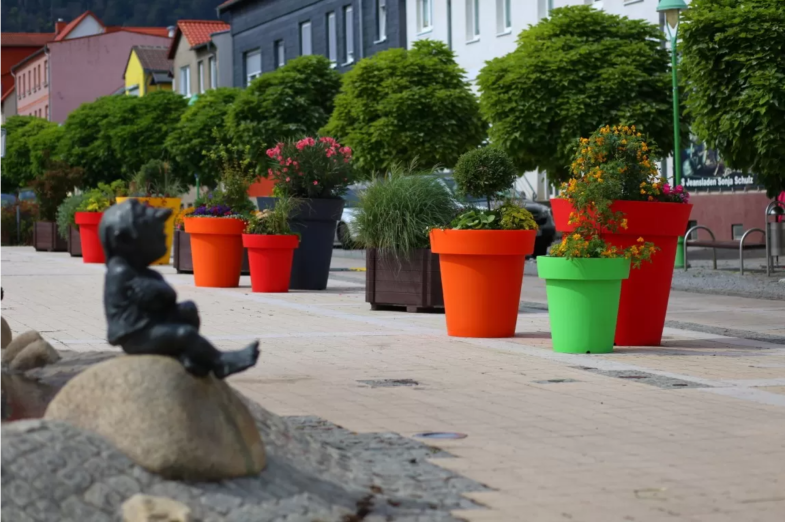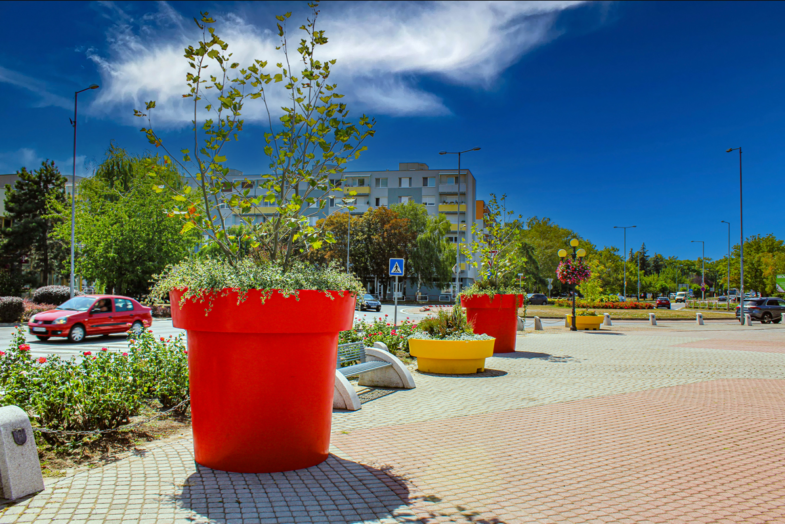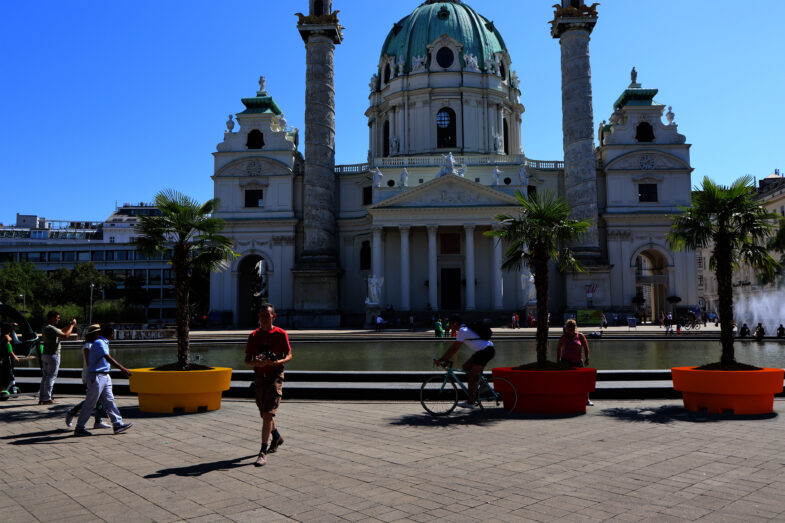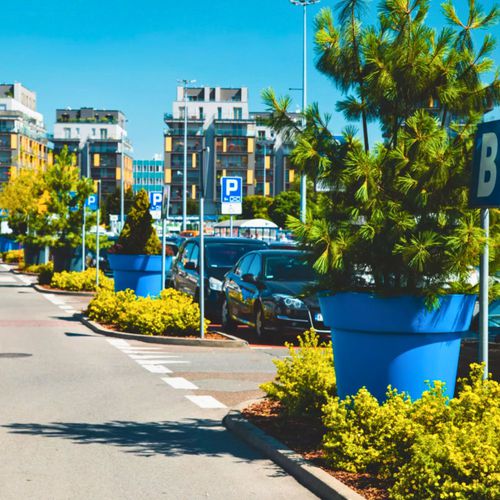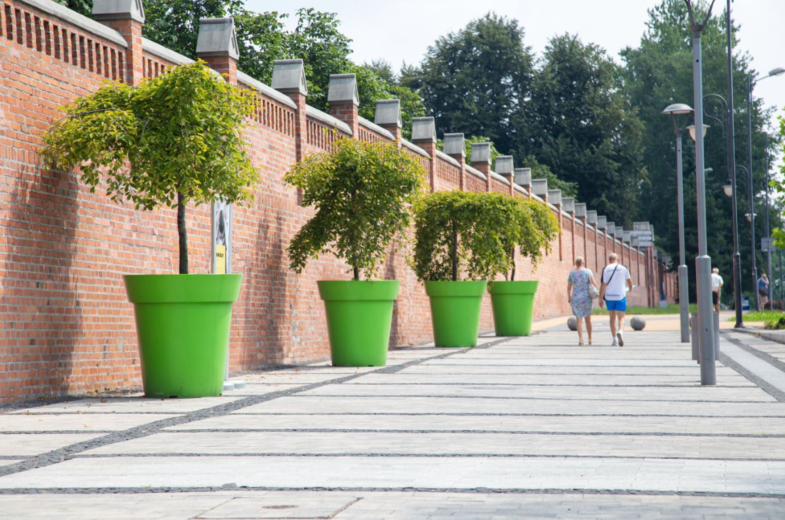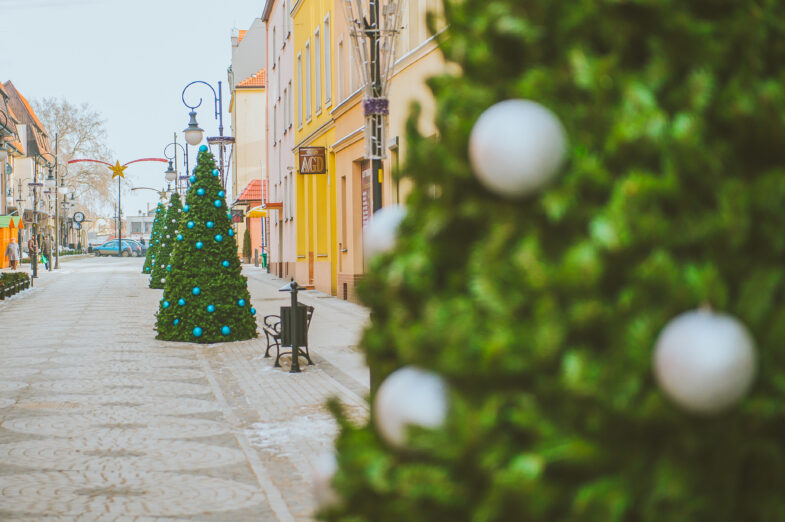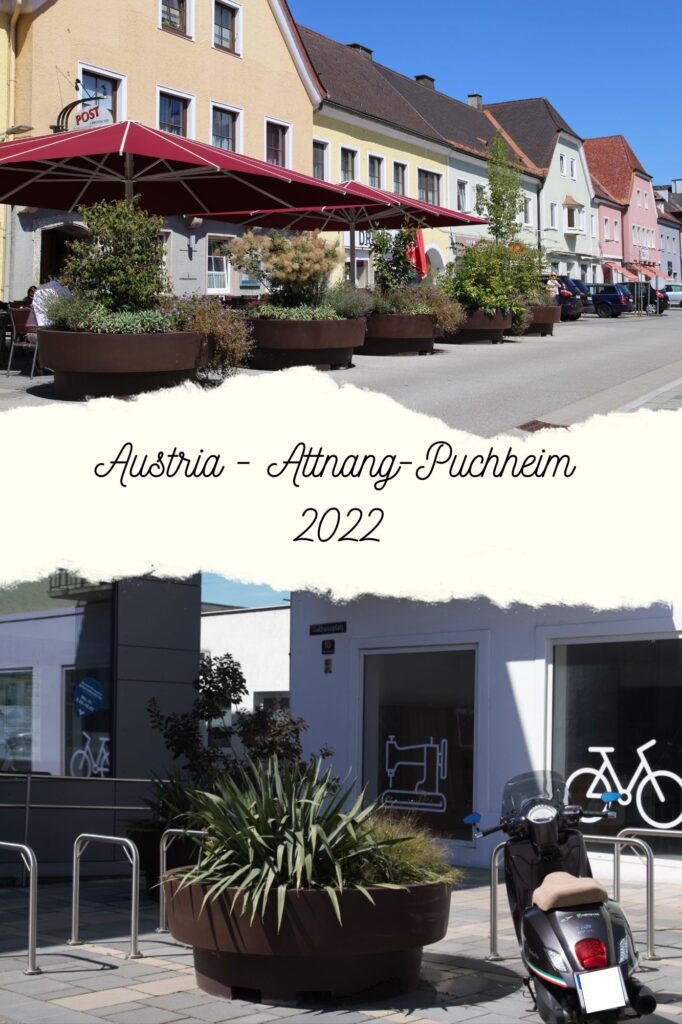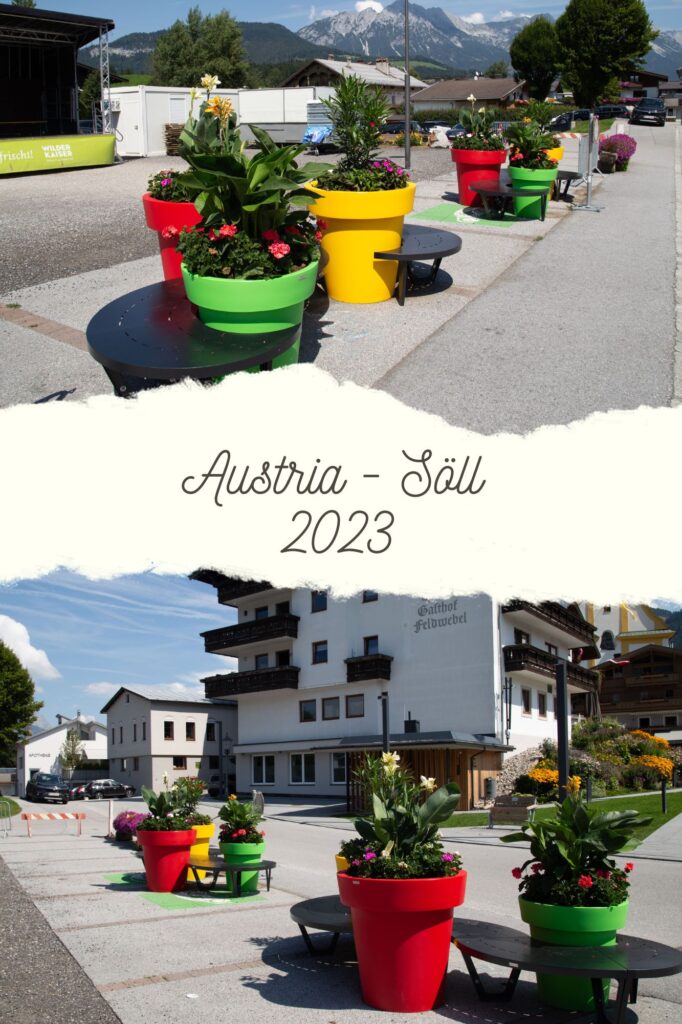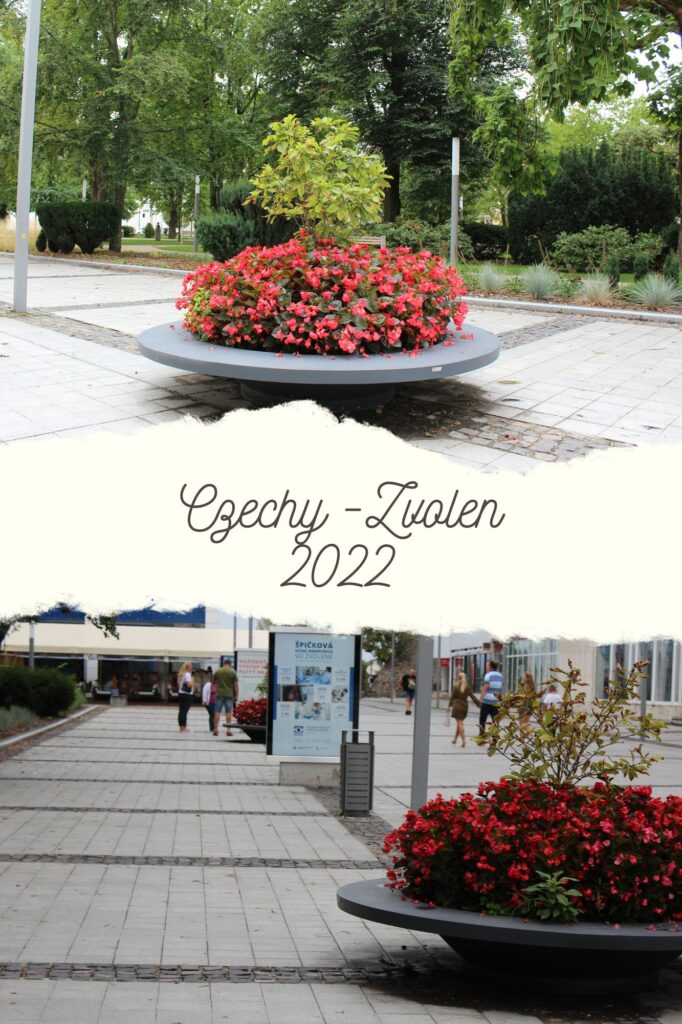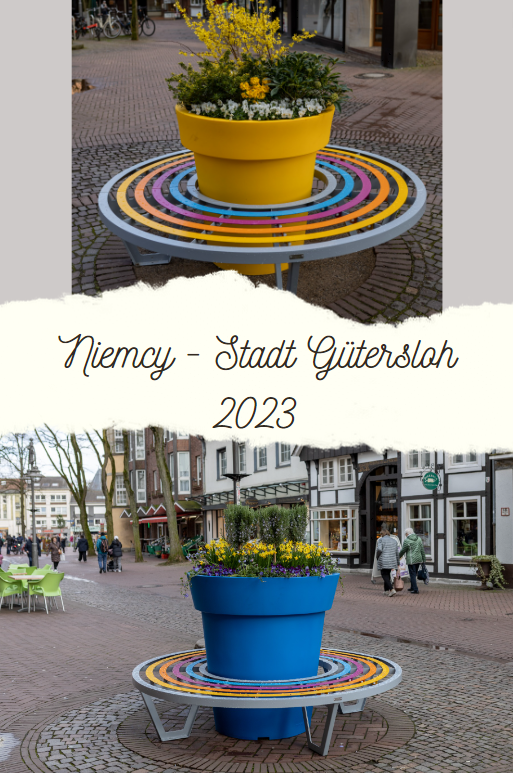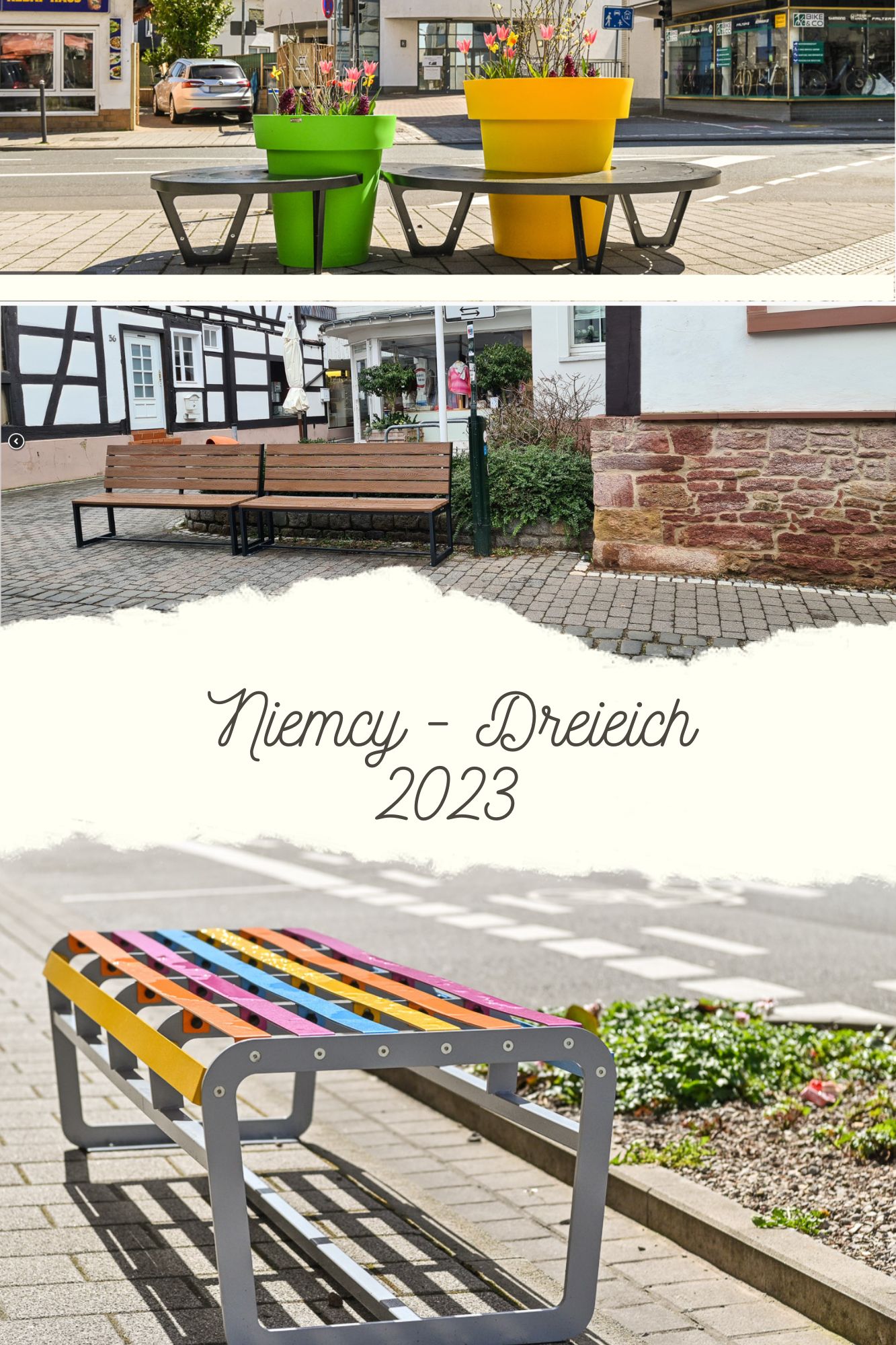6 Essential Tips for Landscape Architects and Urban Planners: How Urban Green Spaces Improve Air Quality and Well-being
Urban green spaces play a pivotal role in creating healthy, functional, and sustainable environments. Landscape architects and urban planners have the crucial task of designing areas that enrich residents’ lives in multiple ways. Here are six essential tips on how to leverage urban greenery to enhance air quality and people’s well-being.
1. Enhancing Air Quality
1.1. Using Trees to Filter Air
Trees are incredibly effective in improving air quality. Through processes like photosynthesis and transpiration, trees absorb carbon dioxide (CO2) and release oxygen (O2). Additionally, leaves and branches capture dust and other air pollutants, such as particulate matter (PM2.5 and PM10), nitrogen oxides (NOx), and ozone (O3). Planting suitable tree species along streets, in parks, and on squares can significantly improve air quality.
Example: The “MillionTreesNYC” program in New York demonstrated that increasing the number of trees in the city effectively reduces levels of particulate matter and other pollutants.

Even without images from the “MillionTreesNYC” initiative, we offer an excellent solution for concrete-covered spaces where traditional tree planting is not possible.
In such areas, XXL planters can accommodate even large trees, making them ideal for places lacking traditional planting space.
XXL planters enable the introduction of greenery into areas where conventional tree planting isn’t feasible, such as plazas, pedestrian zones, or around buildings. These planters are mobile and can be easily relocated, offering flexibility in space management.
Moreover, these planters can be customized in various colors and even personalized with a logo, city crest, flag, or any desired inscription, allowing them to meet specific aesthetic and branding needs.
They are perfect for enriching urban spaces while offering both functionality and aesthetic appeal.
1.2. Green Walls and Roofs in Event Spaces and Offices
Green walls, or vertical gardens, and green roofs are becoming increasingly popular in event spaces and offices. These innovative installations not only enhance the aesthetics of interiors but also bring numerous health and environmental benefits.
Benefits of Green Walls and Roofs:
- Air Quality Improvement: Plants on green walls and roofs filter the air, reducing levels of pollutants and dust, creating healthier environments both indoors and outdoors.
- Aesthetic and Atmosphere: Green walls add elegance and natural charm to event spaces and offices. They can serve as focal points that attract attention and provide a serene background.
- Noise Reduction: Plants on green walls act as natural sound barriers, absorbing and reducing noise, improving indoor acoustics.
- Cooling Effect: Green roofs and walls help regulate building temperatures, reducing the need for air conditioning and lowering energy costs.
- Increased Productivity and Well-being: Studies show that the presence of plants in workplaces can boost productivity and enhance employee well-being.
- Green walls at events create a natural backdrop and friendly atmosphere.
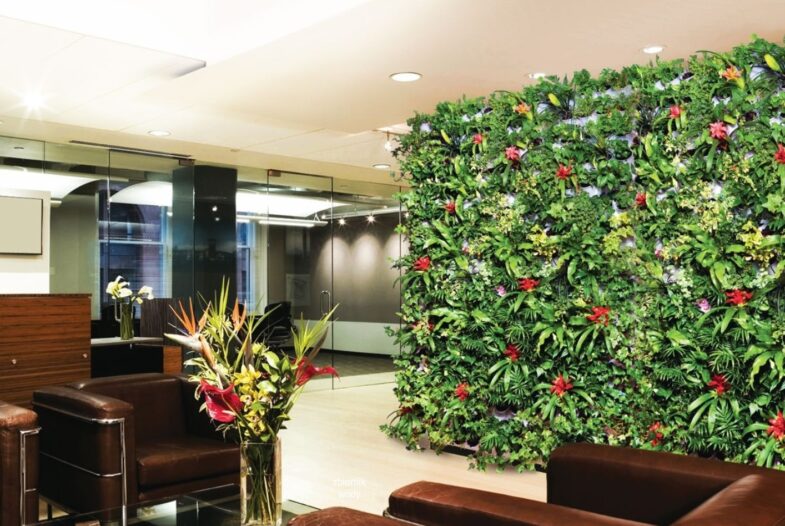
In event spaces, green walls can create unique scenery and foster a sense of closeness to nature. In offices, they introduce elements of greenery that promote relaxation and can reduce employee stress.
Our green walls can be tailored to the client’s specific needs, offering a variety of plant species and unique compositions. They can also be personalized by adding company logos, city crests, or other decorative elements, making them ideal for both offices and event venues.
Example: In London, green roofs are used in public and commercial buildings, helping absorb pollutants and reduce the need for air conditioning.
2. Noise Reduction
2.1. Using Vegetation as Acoustic Screens
Plants, including trees and shrubs, can significantly dampen noise. Densely arranged plants act as natural sound barriers, absorbing, dispersing, and blocking street noise. Planting trees along major thoroughfares or around residential areas helps reduce noise levels and creates a more peaceful urban environment.
Example: In Berlin, green walls and plant screens are used along highways, significantly reducing noise in neighboring districts.
2.2. Creating Quiet Rest Zones
Urban parks and gardens can serve as zones of tranquility and rest in noisy cities. These areas, with strategically placed trees and shrubs, offer places for relaxation and stress reduction. Designing green spaces with acoustic comfort in mind contributes to the improved quality of life for residents.
Our Approach: XXL Planters with Trees
We present our unique solution: XXL planters with trees, perfect for creating quiet rest zones in areas where traditional planting is impossible.
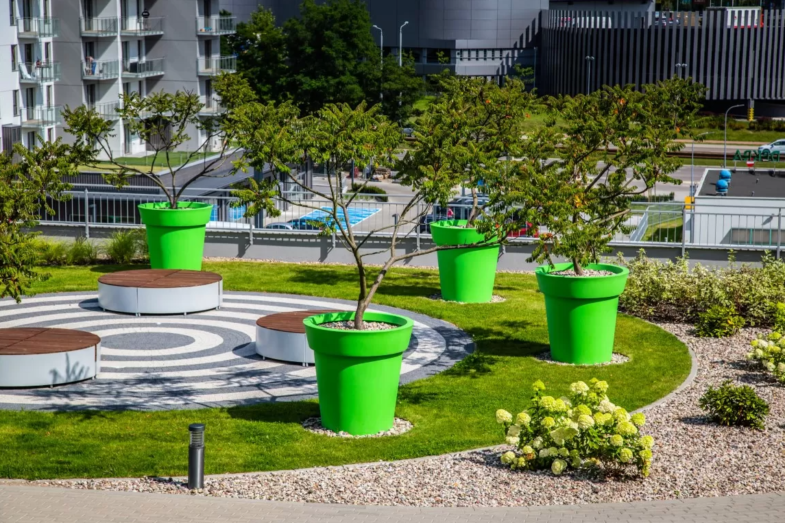
Benefits:
- Flexibility and Mobility
- Aesthetics and Customization
- Noise Reduction
- Ease of Maintenance
Our XXL planters are already used in various locations in Poland, creating friendly and relaxing spaces in shopping centers, urban parks, and events.
Example: Urban parks in Tokyo are designed to provide quiet spaces for relaxation, despite the city’s reputation for intense traffic and noise.
3. Impact on Residents’ Well-being
3.1. Promoting Mental Health through Contact with Nature
Contact with nature has proven positive effects on mental health. Spending time in urban green spaces reduces stress, improves mood, and increases overall happiness. Designing urban spaces with ample greenery can support residents’ mental health.
Example: Research in London found that access to parks and green spaces correlates with lower rates of depression and anxiety.
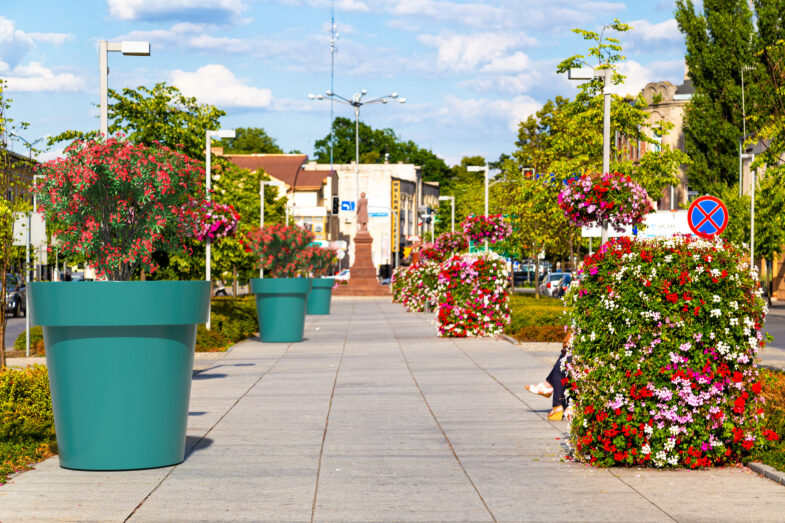
3.2. Encouraging Physical Activity
Urban green spaces, such as parks, squares, and walking paths, encourage physical activity. Regular walking, running, cycling, or exercising outdoors is crucial for maintaining physical and mental health. Landscape architects can design spaces that promote physical activity among residents.
Example: In Amsterdam, green bike paths with greenery are an integral part of the urban infrastructure, promoting a healthy lifestyle and increasing physical activity levels.
4. Building Strong Communities
4.1. Creating Spaces for Social Interaction
Urban greenery supports social interactions, which are crucial for building strong and integrated communities. Parks, squares, and community gardens are places where people can meet, talk, and spend time together. Designing these spaces with social gatherings in mind helps build bonds among residents.
Example: The “Community Gardens” program in San Francisco creates places where neighbors can meet, collaborate, and build relationships, strengthening local communities.
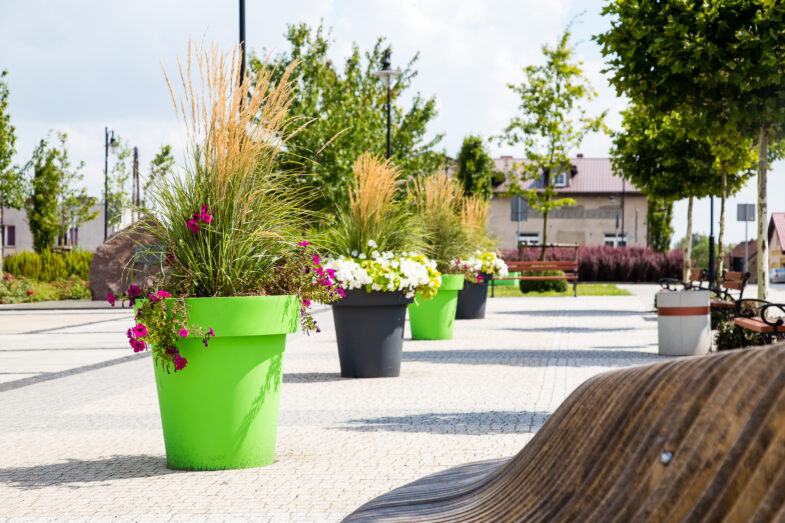
4.2. Shaping Friendly Public Spaces
Urban green spaces can also be designed to be welcoming to different age groups and social demographics. Creating spaces that are accessible and attractive to everyone promotes inclusivity and supports social diversity.
Example: Numerous green parks and squares in Paris are designed with the needs of various social groups in mind, fostering integration and active engagement among residents.
5. Supporting Biodiversity
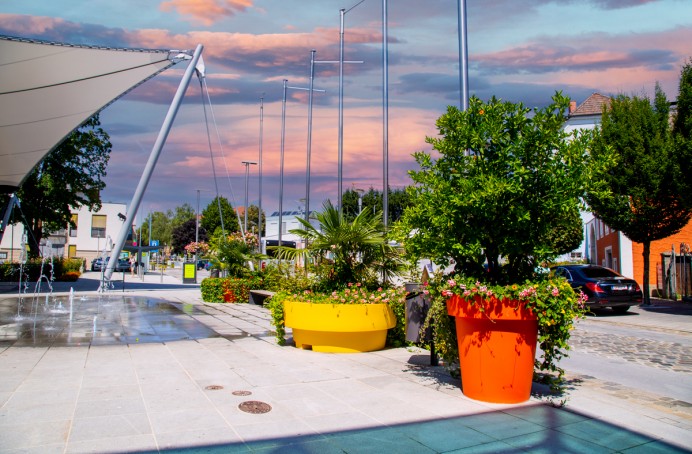
5.1. Protecting Habitats for Wildlife
Urban greenery creates micro-ecosystems that provide habitats for many species of plants and animals. These areas support biodiversity and are crucial for the ecological health of cities. Designing green spaces with wildlife protection in mind supports ecological balance.
Example: Urban botanical gardens in Singapore are home to hundreds of species of plants, insects, and birds, enriching biodiversity in the city’s heart.
Our Approach: Green Corridors with XXL Planters
Our XXL planters with trees can play a key role in creating urban ecological corridors. They enable the introduction of greenery in places where traditional tree planting is impossible, such as narrow streets or concrete plazas. These planters can be strategically placed to connect different green areas in the city, creating a network of green corridors. Their mobility and customization options allow them to adapt to specific urban needs.
Benefits:
- Support for Wildlife: XXL planters allow for the creation of connections between different green areas, facilitating animal migration.
- Flexibility: Easy to place and move planters as needed.
- Aesthetics and Functionality: Planters can be tailored to the surrounding aesthetics, making them attractive elements of the urban landscape.
- Customization: Available in various colors and can be decorated with city logos, crests, or other elements.
- Our XXL planters are excellent tools for creating green corridors in cities, supporting biodiversity and the health of urban ecosystems. Even in heavily urbanized areas, they help sustain natural ecological processes.
Urban greenery plays a crucial role in enhancing the quality of life in cities. It improves air quality, reduces noise, supports residents’ mental and physical health, and contributes to biodiversity conservation and climate adaptation. Investing in green infrastructure is an investment in the future of our cities and the well-being of their residents.
Inspiration from Our Projects
As a company specializing in small architecture, we have had the pleasure of participating in many projects that transformed urban spaces through the use of XXL planters and green walls. Check out our gallery for some of our successful implementations:
